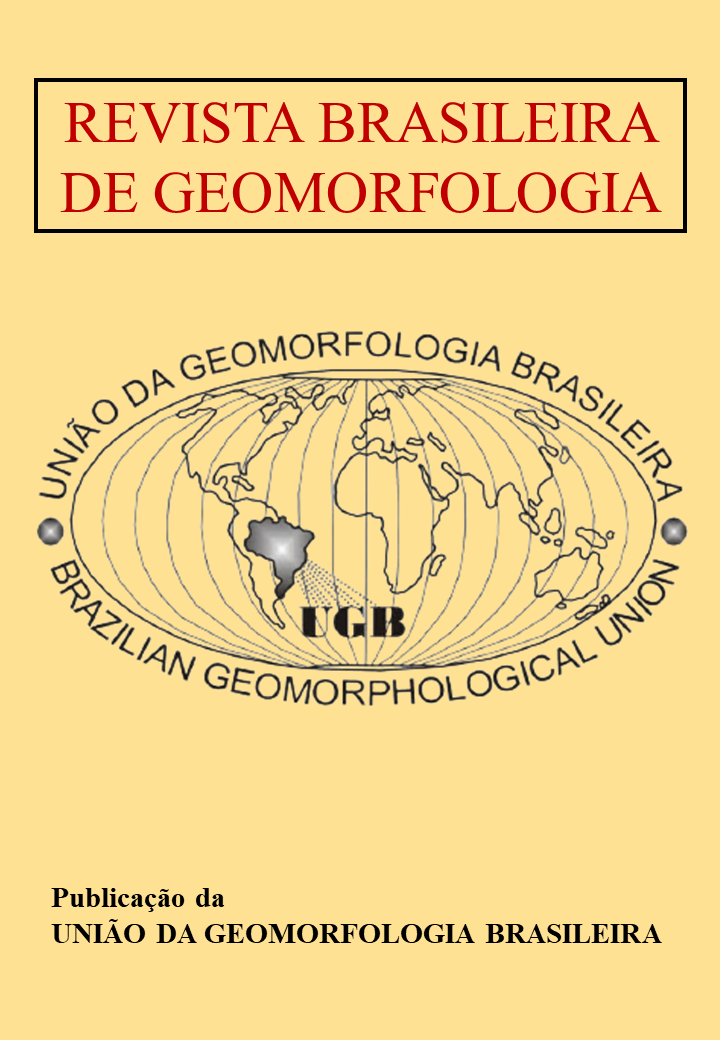Pre-failure topography implementation to predict landslides using a bivariate statistical model
DOI:
https://doi.org/10.20502/rbgeomorfologia.v24i3.2305Keywords:
landslides, Light Detection and Ranging, Airborne Laser Scanning, Pre-failure topography, Post-failure topographyAbstract
Landslides are natural phenomena that impact the economy, infrastructure, and the lives of thousands of people. In statistical modeling, Digital Terrain Models (DTMs) are often used to identify landslide scars and to generate causative maps, which can be analyzed individually or computed together to generate a landslide susceptibility map. However, when obtained after the occurrence of the landslides, these DTMs will no longer represent the terrain characteristics that favored the occurrence of the instabilities (post-failure topography). Moreover, the use of archetypical morphometric signatures of past landslides in statistical models implies relevant conceptual errors. A possible solution to this problem is to assume that pre-failure topography can be inferred by the areas adjacent to the scars that have not been disturbed by the landslides. This paper presents a method for topography reconstructing using LIDAR point cloud database - last return – to predict landslides in bivariate statistical modeling (Weights of Evidence) in the Quitite and Papagaio basins, in the city of Rio de Janeiro. Seven landslide susceptibility models were produced by combining eight causative factors. Each map had its predictive ability tested by calculating the area under the predictive rate curve (AUC). The final model (AUC = 0.77) highlights the direct topographic and hydrologic controls and the indirect lithologic and structural control in the triggering of landslides. The landslides are mainly conditioned by the slopes between the angles of 26° and 52°, facing the North, Northeast, and Northwest faces, in a concave slope curvature (convergent and divergent) and with the contributing area between 1.8m² and 4.1m². The results respect the main assumptions of the model and provide a synthesized and robust view of the landslide susceptible areas, even in a highly geodiverse environment, as is the case in the study area.
Downloads
Downloads
Published
How to Cite
Issue
Section
License

This work is licensed under a Creative Commons Attribution-NonCommercial 4.0 International License.
Author (s) retain copyright and grant the journal right of first publication with the work simultaneously licensed under the Creative Commons Attribution License that allows sharing the work with recognition of its initial publication in this journal.








